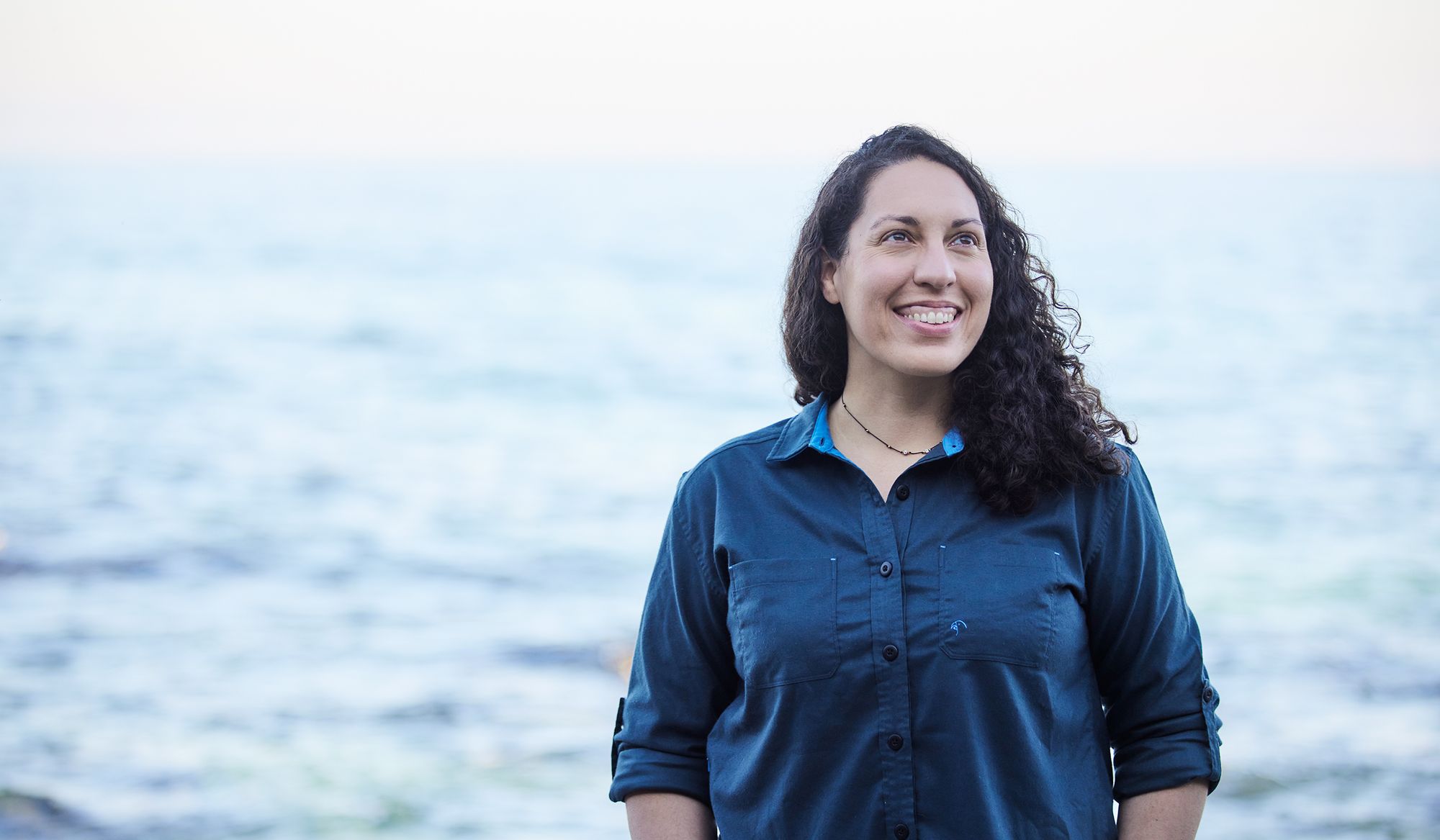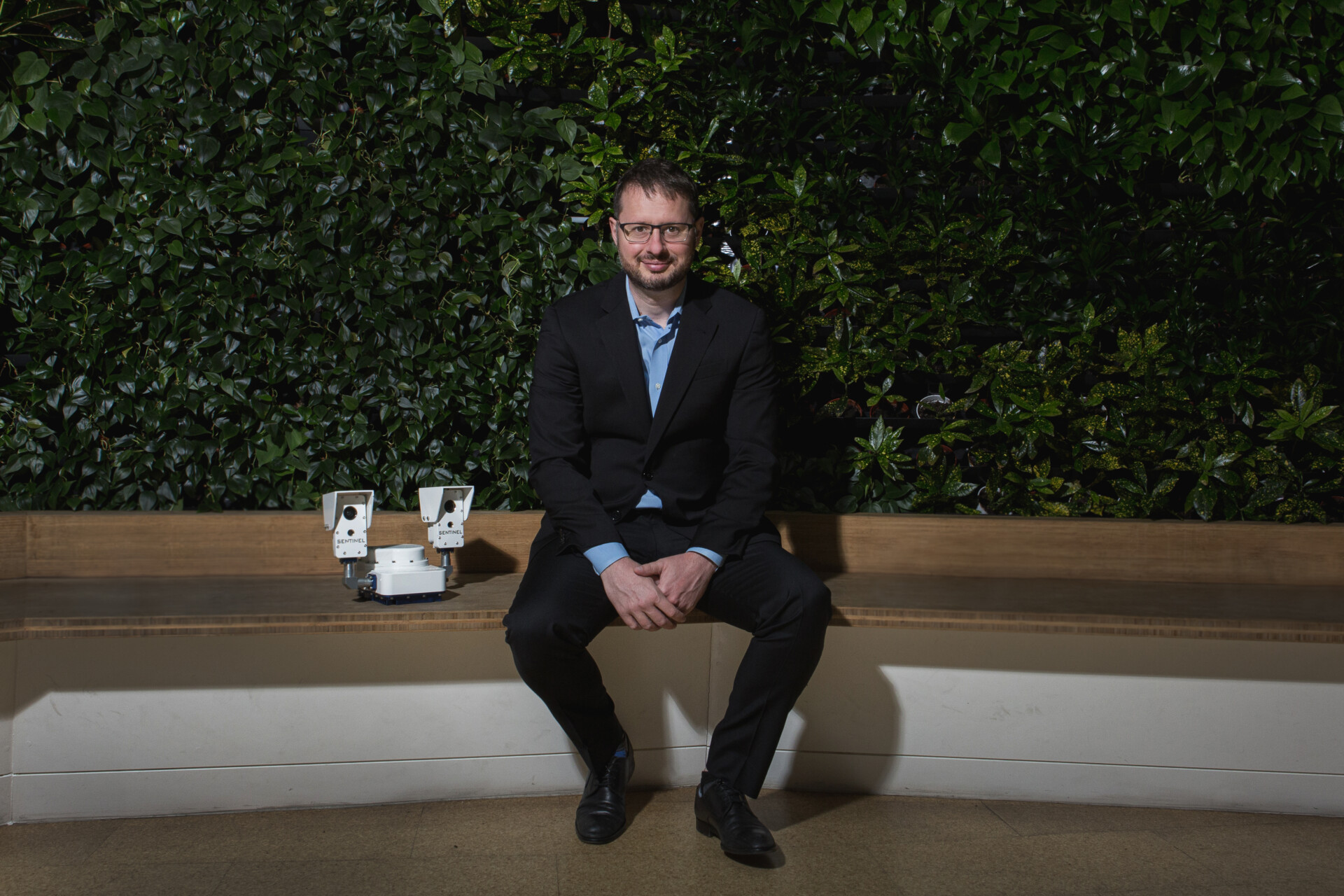The Right Fit
Raquel Vélez, BS (BS ’07) on her pivot from tech to fashion, the stereotypes that affect the apparel industry, and how sustainability is still possible in a world of fast fashion
by Maureen Harmon

Photograph by Mitch Tobias
Raquel Vélez, BS (BS ’07) didn’t grow up with an appreciation for the great outdoors. “My family is from Puerto Rico,” says Vélez, “and the idea of voluntarily sleeping on the ground outside in the cold was not my parents’ definition of success.”
Even so, she fell in love with skiing as an adult living in California. But when she visited her local retailer to buy ski pants, she was disappointed—nothing fit her body. “You don’t feel like you’re a part of the community if you can’t wear the clothing,” she says. Having made her own jeans in the past, she opted to make her own ski pants—and by 2019, she launched her outdoor apparel company, Alpine Parrot, geared toward bigger bodies.
“Fact number one: 68 percent of American women wear sizes 14 and up. Fact number two: Less than 20 percent of outdoor apparel is made in plus sizes. It really comes down to fat phobia.”
— Raquel Vélez, BS (BS ’07)
Techer talked to Vélez, who has a background in mechanical engineering, about her pivot from tech to fashion, the stereotypes that affect the apparel industry, and how sustainability is still possible in a world of fast fashion.
Why do you think the outdoor apparel industry has been so slow to adopt new sizes?
Raquel Vélez: I’ll give you a couple of facts. Fact number one: 68 percent of American women wear sizes 14 and up. Fact number two: Less than 20 percent of outdoor apparel is made in plus sizes. It really comes down to fat phobia. There’s this total misconception that people in bigger bodies don’t engage in physical activities; or that if you have more weight on your body, it would be too hard to go outside; or that bigger-bodied people are lazy, so they have no desire to go outside. Not true. Then there’s the really awful argument of, well, maybe you should exercise more so you wouldn’t be fat. Except, what are you supposed to wear to exercise?
You had carved out a successful career as a mechanical engineer in tech. What led you to fashion?
RV: What started as a plan to make my own jeans because I couldn’t find any that fit, eventually led me to pattern-making courses. The final project in one of the classes was to design an eight-piece line. So I presented a plus-size, women’s skiwear line. My teacher pulled me aside and said, “You need to do this. There are a lot of people just like you, and you are your own customer. You understand their needs better than anybody else.” She told me I had an opportunity to really change an industry. That sat with me for a few months until I finally made the leap from tech to fashion.
How did your engineering background come into play?
RV: I often will tell people that I got my degree in mechanical engineering from Caltech, then went on to be a robotics engineer, then a software engineer, and now I’m an apparel engineer. In all seriousness, the process of patternmaking is simply mechanical engineering, but with fabric instead of metal. I use my engineering background constantly, both in the literal development of our products, as well as in the general day-to-day running of my company—the engineering way of thinking is the only way I know to build a company that will scale over time.
Where did the name Alpine Parrot come from?
RV: There is one species of alpine parrot in the world. It’s called the kea and it lives in the Southern Alps of New Zealand. When you think about parrots, you think of colorful birds that hang out on the beach and dance and sing. But the alpine parrot lives in the mountains. It plays in the snow. It’s super smart, really friendly, but it has this basic olive-green exterior. Yet when it flies, it has these beautiful rainbow underwings that take your breath away. When I think about the people that I serve, particularly people of size and people of color—people like myself—there are all of these stereotypes that have been put on us about the outdoors. But the reality is, when we’re in our element, just like the alpine parrot, we shine.
How are you tackling sustainability issues in an apparel industry that is notorious for waste?
RV: There is a lot of very intentional design in our products. We want to make sure we are making the most useful products for our customers, and we want those products to last as long as possible. For example, the fabric in our Ponderosa pants is stretchy because bodies are constantly changing. But it’s also breathable, quick-drying, and abrasion-resistant. The abrasion resistance is important, not just when you’re hiking—the inner thigh is the first area where pants start to fall apart for bigger-bodied folks. There are products out there that will have three or four different fabrics in the same garment. All of our products use the same fabric throughout the garment, so we can get as much use out of every roll of fabric as possible. To minimize environmental effects of shipping, we use a lot of the same items across our products. So the buttons on our flannel shirts are the same buttons on our pants. The dyes for our products are Bluesign approved, which means that an independent third party has confirmed that these dyes are not toxic. And every single person who is involved in making our products is being paid a living wage and working under good conditions.
What’s on the horizon for Alpine Parrot?
RV: Alpine Parrot has had slow and steady growth. We spent a lot of time doing fit testing to make sure that people really felt confident in our clothing. We’ve got shorts and hoodies on the horizon. We’ve got rain jackets. My goal is to have everything that you would find in any outdoor apparel store. I want to make sure that every single bigger-bodied human who loves to engage in the outdoors has what they need to be safe and comfortable. It’s really basic. People ask, “What novel invention do you have?” And I say, “Nothing. I just make clothes that fit.”

Related Articles
-

Binding Lights
In a recent research paper, assistant professor Alireza Marandi delves into the innovative realm of mode-locked lasers.
-

Fashion >> Forward
For Daniel Mukasa, the future of wearables requires sweating the small stuff.
-

Burn Notice
Wildfires are on the rise across the globe and curbing them will be a team effort among organizations and technology. Gilberto DeSalvo and his comp...